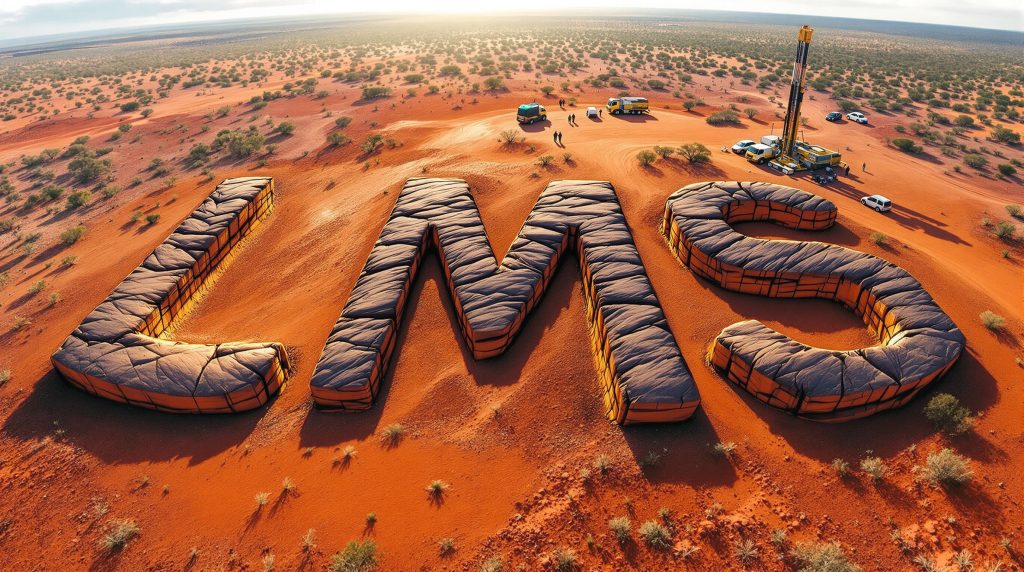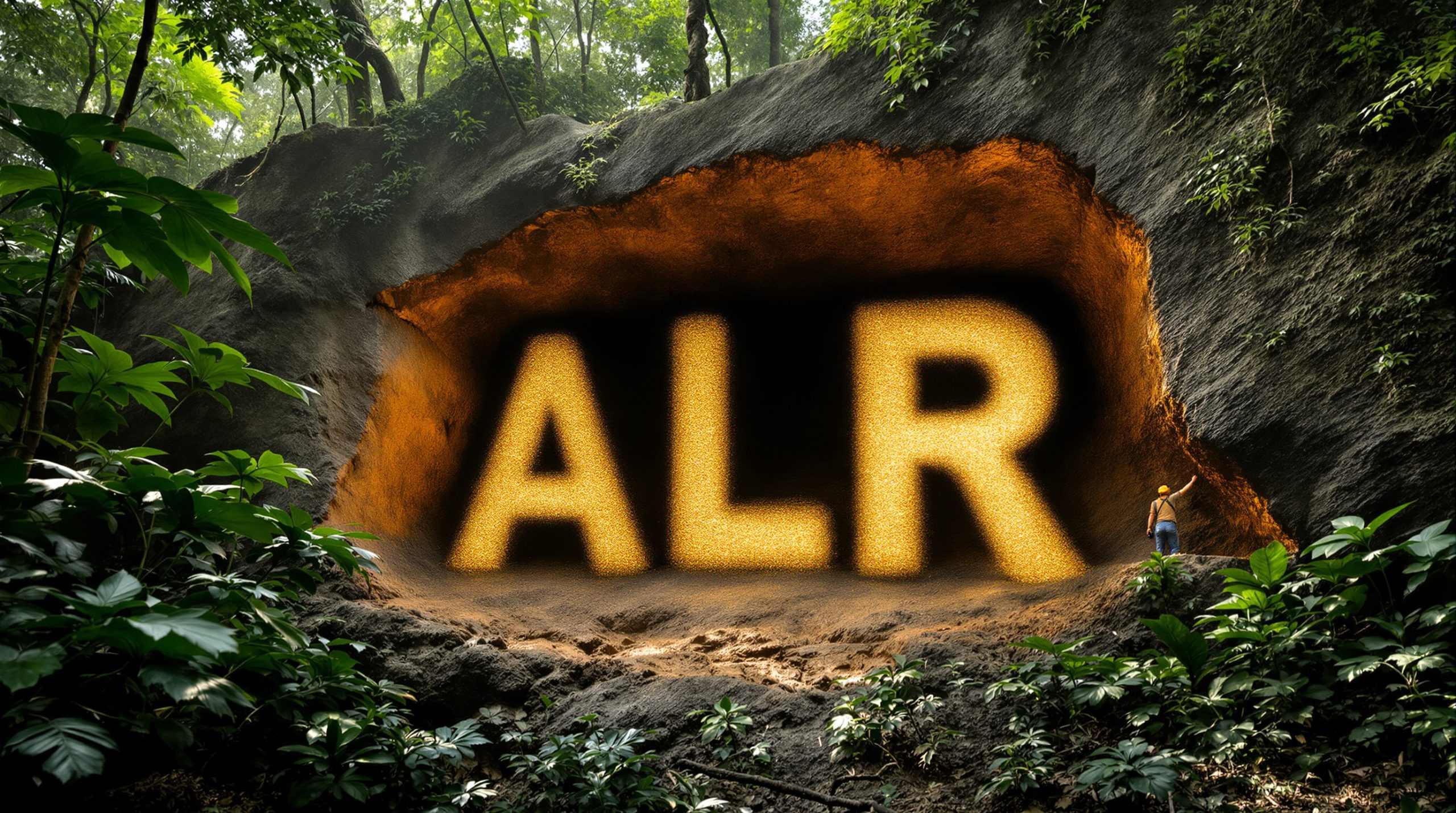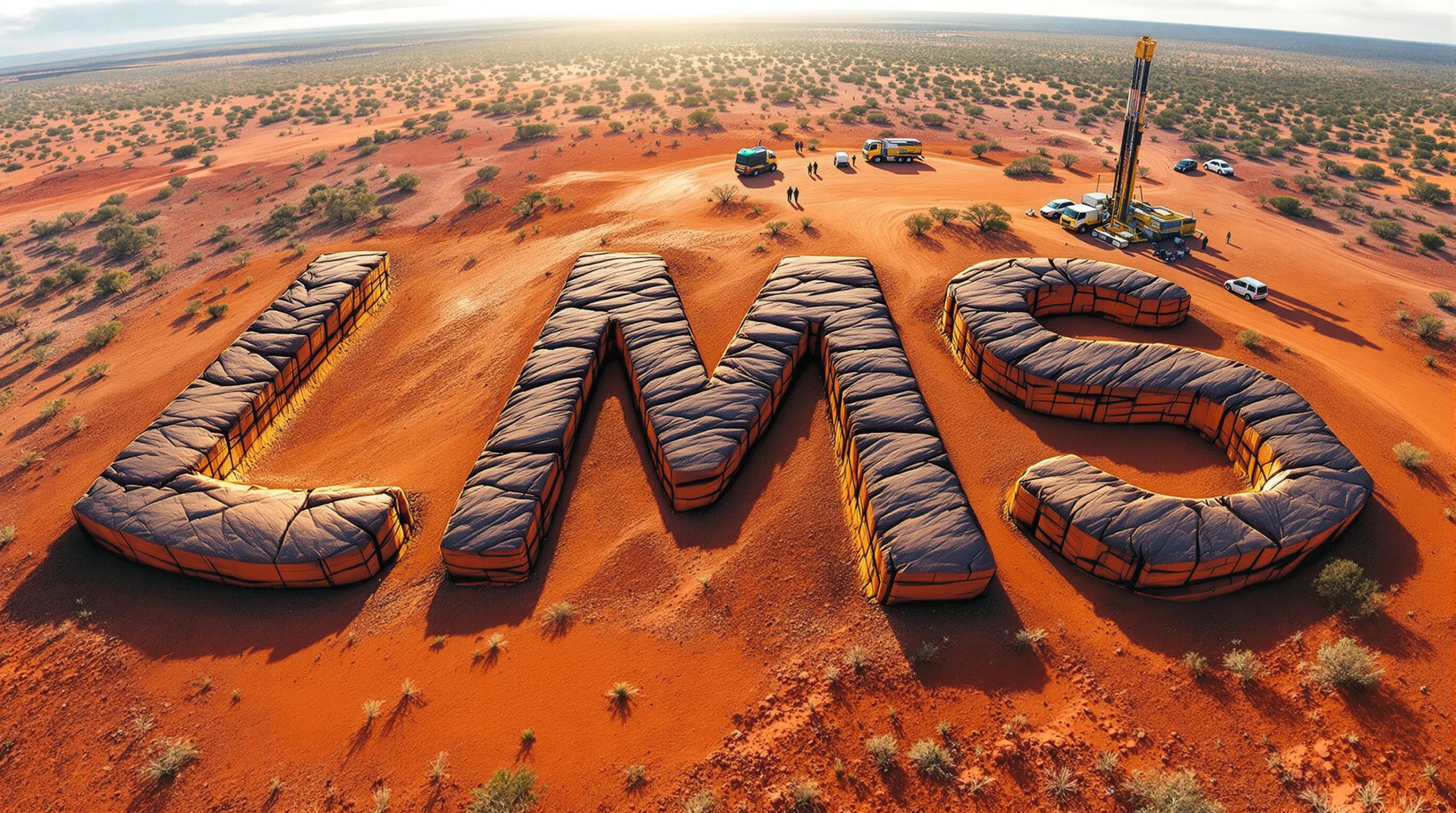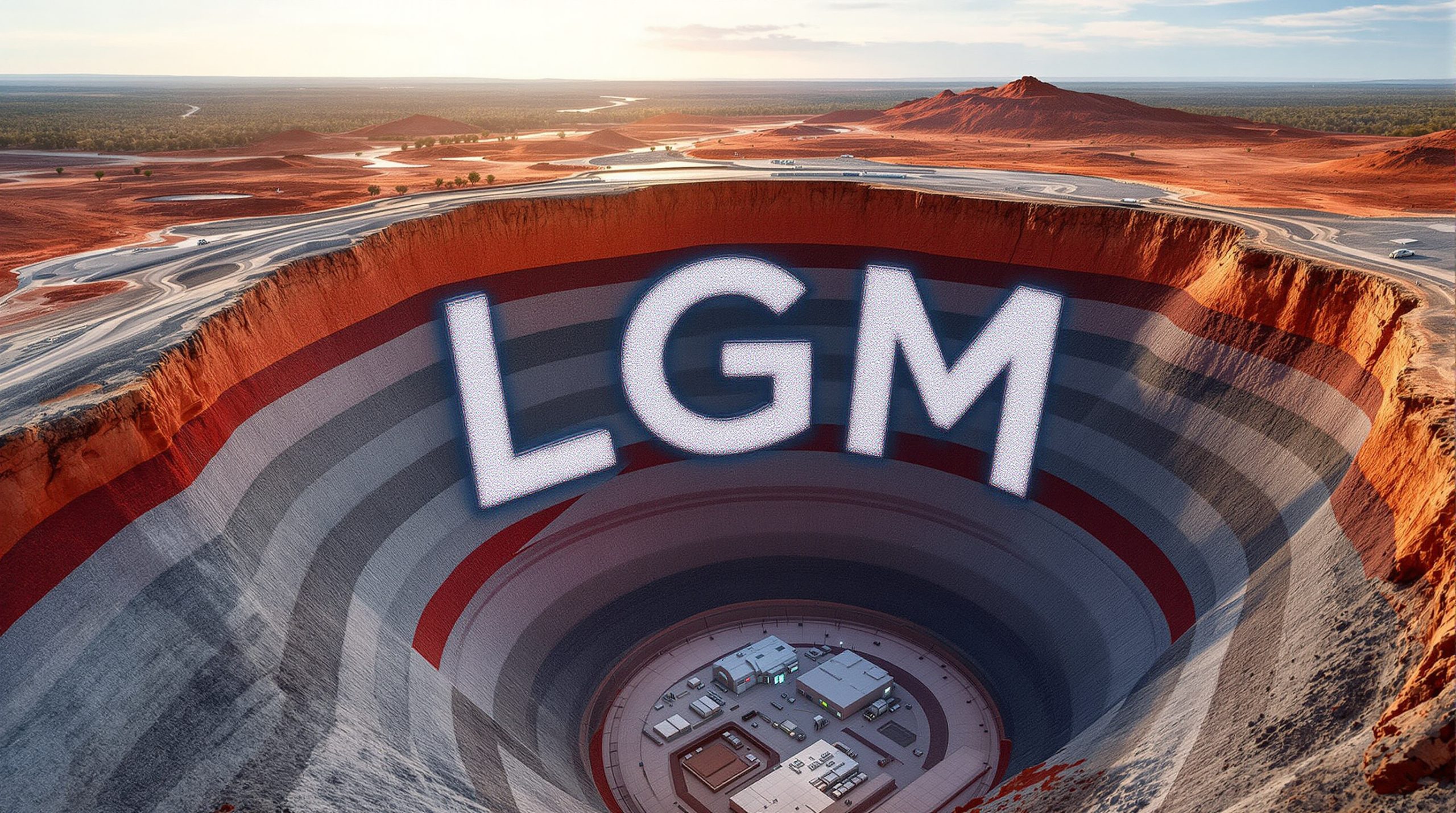Impressive Copper Intercepts Validate Exploration Model
The company's latest drilling campaign has delivered standout results with preliminary portable XRF (pXRF) analysis from hole OGRC010 revealing:
- 104m @ 0.92% Cu, 1.59% Zn, 0.08% Pb from surface
- Including 21m @ 1.81% Cu, 1.58% Zn from 144m
- And 41m @ 0.85% Cu, 1.99% Zn from surface
These exceptional intercepts align with visual observations of abundant chalcopyrite and sphalerite mineralisation, confirming OGRC010 as the most significant intersection drilled at Oonagalabi to date.
It's worth noting that Litchfield's prior experience at Oonagalabi indicates that laboratory assays typically return higher grades than the field pXRF results—with previous drilling campaigns showing assayed results returning 37% better for copper and 17% better for zinc than pXRF readings.
Understanding Portable XRF Analysis
Portable X-ray fluorescence (pXRF) is a field analysis technique that provides rapid, non-destructive elemental analysis of samples. While useful for immediate field decisions, pXRF results are considered preliminary and require confirmation through laboratory assays.
In mineral exploration, pXRF allows geologists to:
- Quickly identify mineralised zones
- Make real-time decisions about drilling targets
- Provide preliminary grade estimates
The technology works by emitting X-rays that cause elements in the sample to fluoresce, producing characteristic energy signatures that identify specific elements and their relative abundance.
Litchfield uses an Olympus Vanta pXRF analyser in 3-beam Geochem mode, taking measurements for 45 seconds per sample. The company maintains rigorous quality control protocols including regular calibration and cleaning between readings.
Geophysical Targets Proving Their Worth
OGRC010 successfully intercepted the high chargeability western IP anomaly (+25mV/V) defined in this year's induced polarisation program, confirming a strong correlation between chargeability and disseminated Cu-Zn sulphides.
Interestingly, the VTEM modeling indicates that high-grade Cu-Zn mineralisation at Oonagalabi is located within a zone of low conductivity. This raises compelling questions about higher conductive zones nearby, particularly the strong conductive anomaly at VT2, which is currently being drilled.
Gold Potential Emerging at VT1 Conductor
In addition to copper discovery at Litchfield Minerals, the company has reported promising results from a rock chip taken directly above the VT1 conductor, which returned 0.6% Cu, 0.6 g/t Au, 14g/t Ag, and 7 g/t Te. The presence of tellurium is particularly significant as it commonly accompanies gold in magmatic-hydrothermal systems.
The company notes several important aspects of this discovery:
- The strong EM conductor suggests the presence of sulphides such as chalcopyrite, galena, or pyrrhotite
- Finding copper, gold and tellurium directly above the conductor suggests it likely contains valuable metals rather than barren material
- The tellurium value of 7 ppm is considered highly anomalous and consistent with gold-bearing fluids
- The association of copper, gold and tellurium points toward a fertile skarn or IOCG-style mineralisation system
Understanding Induced Polarisation (IP) Surveys
IP surveys measure the chargeability of subsurface materials—essentially how well they can hold an electrical charge. This is particularly useful for identifying disseminated sulphide minerals that might contain valuable metals like copper and zinc.
Chargeability is measured in millivolts per volt (mV/V) and represents how long a voltage persists in the ground after an electric current is switched off. Higher values typically indicate:
- Greater concentrations of polarisable minerals
- The potential presence of disseminated sulphide minerals
- Zones that warrant further exploration through drilling
In the case of Oonagalabi, the high chargeability anomaly (+25mV/V) that OGRC010 targeted has proven to host significant copper-zinc mineralisation, validating the effectiveness of this exploration technique for the project.
What is VTEM and Why Does It Matter?
Versatile Time Domain Electromagnetic (VTEM) surveys are airborne geophysical methods used to detect conductive bodies below the surface. These surveys:
- Can identify massive or semi-massive sulphide bodies that may contain valuable metals
- Measure conductivity in Siemens (S), with higher values suggesting more conductive material
- Help create 3D models of conductive bodies to guide drilling
At Oonagalabi, VTEM modelling has identified several significant conductors, with VT1 showing conductivity up to 700 S and VT2 presenting as a 500m long highly conductive anomaly. These targets represent potential zones of semi-massive to massive sulphides that could host additional mineralisation.
The discovery that high-grade Cu-Zn mineralisation at Oonagalabi occurs in a low-conductivity environment makes the nearby high-conductivity anomalies particularly intriguing exploration targets.
Ongoing Drilling and Upcoming Catalysts
Litchfield's drilling campaign continues with current operations focused on:
- OGRC11P (VT2): Testing a ~500m long, highly conductive VTEM modeled plate interpreted to represent semi-massive to massive sulphides
- Upcoming holes at VT1 and Bomb Diggity to follow
While progress has been slower than anticipated due to challenging ground conditions and equipment logistics, every metre drilled is adding critical geological insight into what is developing into a large copper-zinc system with lateral continuity.
"Hole 10 is a positive milestone for proving this system hosts grades as well as volume, over 100m of copper sulphide mineralisation, with multiple high-grade zones, is an outstanding outcome. Every hole to date has hit copper mineralisation, reinforcing the strength and continuity of this system," notes the Managing Director of Litchfield Minerals.
Investment Case for Litchfield Minerals
The Oonagalabi project is demonstrating several compelling investment attributes:
- Scale potential – Every hole drilled to date has intersected copper mineralisation, underscoring the system's size and continuity
- Grade confirmation – The latest results show significant zones of higher-grade mineralisation within the broader system
- Exploration upside – Multiple untested conductors including VT2 and VT1 show potential for additional discoveries
- Critical minerals focus – The copper-zinc mineralisation represents exposure to metals essential for energy transition
- Geophysical validation – The correlation between geophysical anomalies and mineralisation increases confidence in upcoming targets
Why Investors Should Watch Litchfield Minerals
Litchfield Minerals represents an opportunity to gain exposure to a potentially significant copper-zinc system at an early stage of definition. With every drill hole hitting mineralisation and the recent copper discovery at Litchfield Minerals of over 100 metres of copper sulphide, the company is demonstrating the substantial scale of the Oonagalabi system.
The upcoming assay results from OGRC010 will be a critical near-term catalyst, especially given the company's experience that laboratory assays typically return higher grades than pXRF readings. Additionally, the drilling at VT2—testing a large, highly conductive anomaly with independent verification supporting a high likelihood of sulphide source—could represent another major discovery.
For investors seeking exposure to critical minerals exploration with near-term catalysts, Litchfield's systematic approach to unlocking the potential of the Oonagalabi project merits close attention in the coming weeks.
Ready to Capitalise on These Impressive Copper Results?
With exceptional copper intercepts and promising gold potential emerging across multiple targets, Litchfield Minerals presents a compelling opportunity in the critical minerals space. Every drill hole continues to validate their exploration model while building confidence in the scale and grade of the Oonagalabi system. To learn more about this developing copper-zinc project and stay updated on upcoming assay results that could catalyse significant value, visit Litchfield Minerals' website today.




